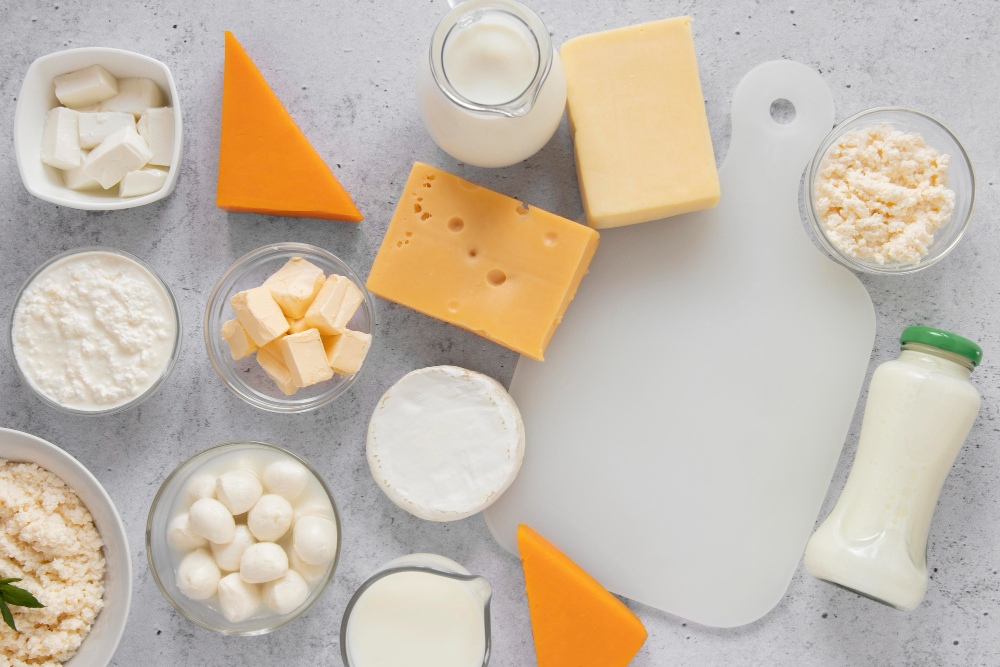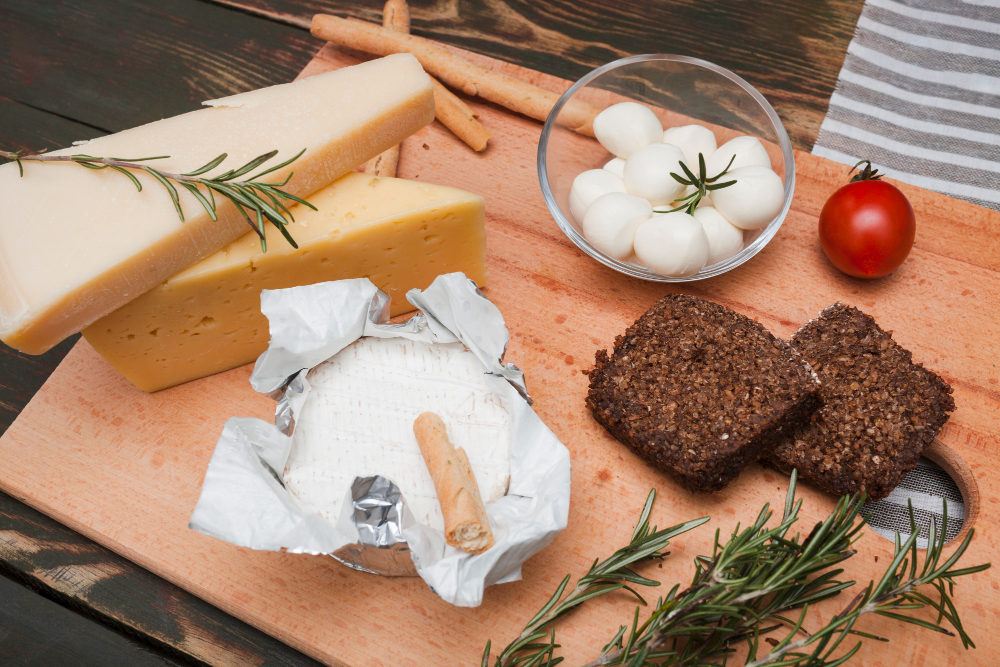Summary:
China's dairy industry saw rising imports
(+11% in Q1 2025) and surging exports (+95.9%), with Yili growing but Mengniu
facing declines. Premiumization, health trends, and stable raw material prices
emerged, while supply chains adjusted and plant-based alternatives rose.
I. Import-Export and International Trade
1. Import Data
In Q1 2025, China's dairy product imports
reached 723,600 metric tons (+11% YoY), with a value of $3.167 billion (+23%
YoY). Key categories saw surging imports: cream (+52.1% YoY), whey products
(+38.1%), and infant formula (+14.6%), with March infant formula imports
spiking 47.6% YoY. Import prices diverged: cream up 26.5%, proteins up 37.1%,
but whey powder and packaged milk prices dipped slightly.
Supply Chain:
New Zealand and Australia remained dominant sources, with New Zealand
accounting for 66.6% of cheese imports and Australia 15.2%. U.S. California
production fell 2.1% due to avian flu, but overall exports still grew.
2. Export Data
Dairy exports hit 28,300 metric tons in Q1
(+95.9% YoY), valued at $86 million (+52.4% YoY). Major exports included bulk
powder (12,900 tons, +413.1% YoY) and infant formula (1,890 tons, +29.7%),
targeting Singapore, Hong Kong, and the Philippines.
II. Sales and Market Performance
Leading Enterprises' Results
-
Yili: Q1 2025 revenue: ¥33.018
billion (+1.35% YoY), net profit: ¥4.874 billion (-17.71% YoY), but milk
powder and dairy products revenue rose 18.65% YoY to ¥8.813 billion.
-
Mengniu: 2024 revenue: ¥88.675
billion (-10.09% YoY), net profit plummeted 97.83%.
-
Regional Players: Brands like
Yantang and Tianrun faced revenue declines in Q1 2025; some pursued growth
via direct sales (e.g., New Dairy's direct sales accounted for 58.4%).
Consumer Trends
-
Premiumization: Yili's high-end
cold-chain milk revenue grew >30% YoY; Mengniu's "Daily
Fresh" maintained double-digit growth.
-
Health Demand: Low-fat milk is
expected to expand under the "Weight Management Year" policy,
while yogurt grows driven by new products like milk skin yogurt.

III. Price and Cost Dynamics
Raw Material Prices
Domestic raw milk purchase prices
stabilized after three years of decline, averaging ¥3.11/kg in major producing
provinces in 2024 (-15.03% YoY), with a rebound expected in H2 2025.
Internationally, New Zealand's milk powder (converted to raw milk) priced above
China's for the first time in May 2024, easing import pressure.
Retail Prices
In May 2025, milk retail price: ¥12.17/L
(-0.9% YoY); yogurt: ¥15.80/kg (-1.56% YoY). Imported dairy prices diverged:
cream +26.5%, whey powder -1.7%.
Cost Pressures
Packaging accounts for 20-30% of dairy
costs. In 2025, PET bottle chip prices fell 14.69% YoY, corrugated paper
-6.43%, easing costs. However, EU packaging regulations (effective 2025) may
raise compliance costs for exporters.
IV. Supply Chain and Capacity Layout
Domestic Supply Chain
-
Milk Source Restructuring: Social
farms exited due to losses, increasing dairy companies' self-owned ranch
share. China's milk output fell 2.8% YoY to 40.79 million tons in 2024.
-
Cold Chain Logistics: Hainan Free
Trade Port's "cross-customs zone conditional release" mode
improved dairy export efficiency.
International Supply Chain
Global players like Fonterra and Nestlé
accelerated sustainable supply chain initiatives (e.g., Fonterra's cross-border
logistics partnership with C&D Lifesupply, Nestlé's net-zero carbon ranch
pilots). However, U.S. CHS Inc.'s soybean export remained suspended, impacting
some processors' raw material supply.

V. Policies and Industry Trends
Domestic Policies
-
Consumption Stimulus: The national
"Weight Management Year" boosted low-fat milk demand; new
standards for fermented and sterilized milk (effective September 2025)
restrict reconstituted milk use.
-
Sustainability: The Ministry of
Agriculture requires a 10% annual increase in biopesticide use by 2025,
pushing dairy packaging toward green materials.
International Standards
The International Seed Testing Association
(ISTA) 2025 rules on seed treatment agent testing may raise dairy export
compliance costs.
Industry Trends
-
Cheese Market: Output expected to
hit 500,000 tons in 2025, with a market size exceeding ¥30 billion; New
Zealand and Australia are major sources.
-
Plant-Based Alternatives: China's
plant-based dairy market may surpass ¥10 billion in 2025, with oat milk
growing 200% YoY, posing competition to traditional dairy.
VI. Industry Conferences and Technical
Exchanges
-
China Dairy Technology Expo & Carnival (May 23-25, Nanjing International Expo Center): Hosted by
China Dairy Industry Association, focusing on innovation and consumer
upgrade, featuring new functional dairy products (e.g., low-GI
high-calcium milk, medical foods) and transparent factory tours.
-
16th China Dairy Congress (July
13-15, Xiamen): One of Asia's largest dairy exhibitions, covering tech
displays, D20 forums, and trend seminars, expecting 500+ exhibitors and
60,000+ professionals.
-
IDF World Dairy Summit (October
20-23, Santiago, Chile): Focuses on dairy's role in sustainable
agriculture and low-carbon production, attracting 1,000+ participants from
60+ countries, including technical exhibitions and southern Chile ranch
tours.
-
MENA 2025 (April 8-9, Dubai, UAE):
Highlights MENA dairy markets, discussing high-value demand driven by
population growth, innovative processing, and trade strategies, with 500+
industry representatives.
-
IDDBA (June 1-3, New Orleans, USA):
A global dairy, deli, and bakery event showcasing new products (e.g.,
Middle Eastern plant-based sauces), retail trends, and supply chain
solutions, attracting 10,000+ professionals.
Data Sources:
Ministry of Agriculture and Rural Affairs, General Administration of Customs,
China Dairy Industry Association, National Bureau of Statistics, CCM
More information can be found at CCM Dairy Products China Monthly Report.
About CCM:
CCM is the leading market intelligence provider for China's agriculture, chemicals, food & feed and life science markets. Founded in 2001, CCM offers a range of content solutions, from price and trade analysis to industry newsletters and customized market research reports. CCM is a brand of Kcomber Inc.
For more information about CCM, please visit www.cnchemicals.com or get in touch with us directly by emailing econtact@cnchemicals.com or calling +86-20-37616606.